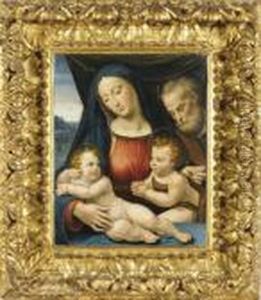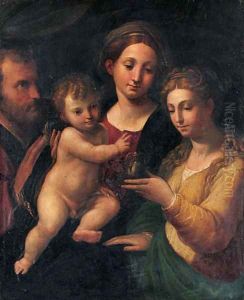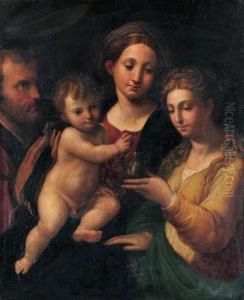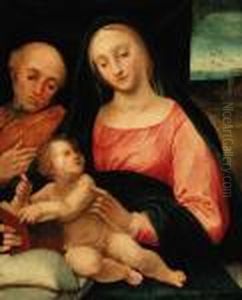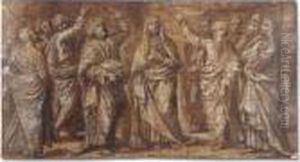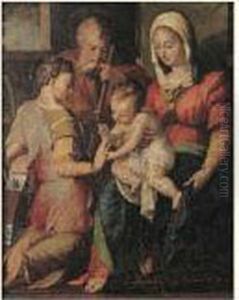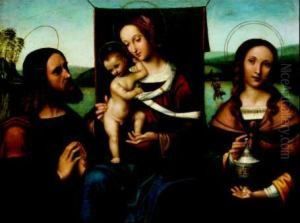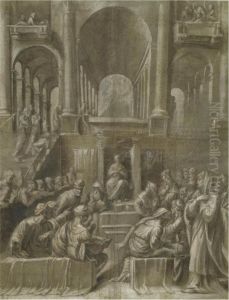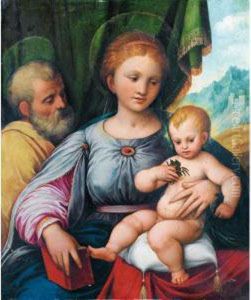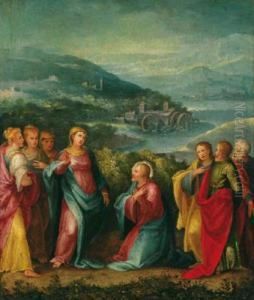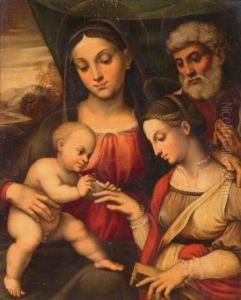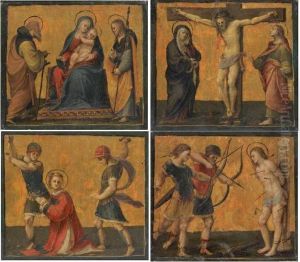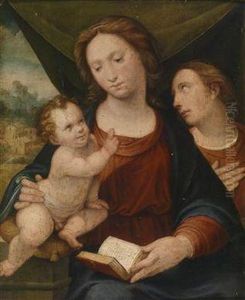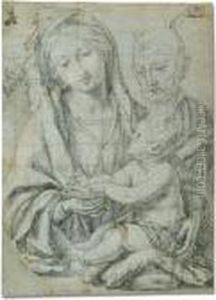Bartolomeo Ramenghi (Bagnacavallo) Paintings
Bartolomeo Ramenghi, known as Bagnacavallo from his birthplace near Ravenna, Italy, was an influential Italian painter of the High Renaissance. Born in 1484, he was a prominent figure in the transition from the early to the high phases of the Renaissance. Although not as widely recognized as some of his contemporaries, Bagnacavallo's work played a crucial role in the development of Italian art, showcasing a blend of traditional and innovative techniques.
Bagnacavallo initially trained under Francesco Francia in Bologna, where he was exposed to the harmonious and detailed style characteristic of the Bolognese school. However, his style significantly evolved after he moved to Rome in the early 16th century. There, he became an admirer and follower of Raphael, one of the period's most celebrated artists. Under Raphael's influence, Bagnacavallo adopted a more graceful and refined approach, incorporating the idealized beauty and compositional balance that Raphael was renowned for.
Despite his achievements, much of Bagnacavallo's work was overshadowed by the towering figures of his age, such as Raphael, Michelangelo, and Leonardo da Vinci. Nevertheless, he contributed notably to the art of fresco painting and altarpieces, with works that emphasized narrative clarity and emotional depth. His religious and mythological scenes, characterized by their vivid detail and vibrant color palette, were particularly admired for their expressive figures and sophisticated use of light and shadow.
After Raphael's death in 1520, Bagnacavallo returned to Bologna, where he continued to work and influence the local art scene until his death in 1542. There, he became a central figure in the Bolognese school, mentoring younger artists and helping to perpetuate the styles and techniques he had learned from his time in Rome. His legacy is preserved in various churches and galleries across Italy, where his works continue to be admired for their beauty and technical mastery.
Bagnacavallo's contribution to the Italian Renaissance, though not as prominently celebrated as some of his peers, remains significant. Through his blending of Bolognese tradition and Roman innovation, he helped pave the way for subsequent generations of artists, making him a pivotal figure in the history of Italian art.
